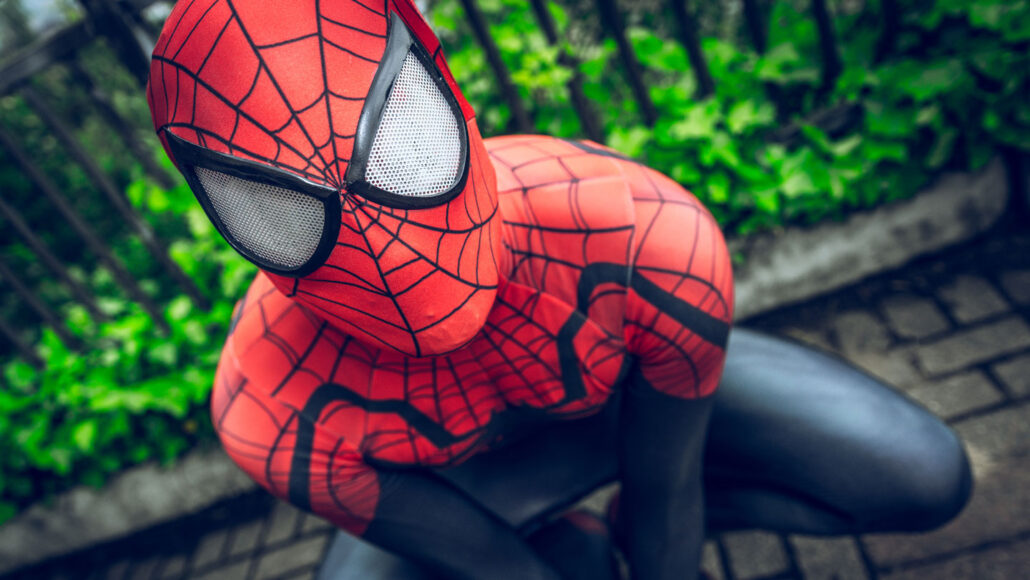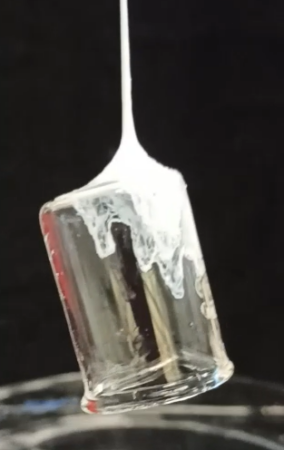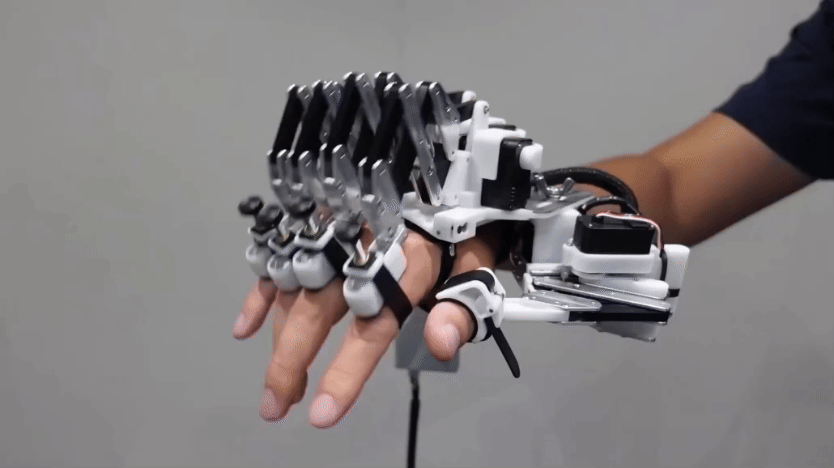A lucky lab accident produces Spider-Man-like silk
Researchers can shoot out the material and use it to lift small objects

Spider-Man uses his web shooters to catch criminals and whisk innocent bystanders to safety. Now, a real-life web shooter can stick to and lift up small objects. Materials from animals including spiders, moths and mussels inspired the research.
ColobusYeti/iStock/Getty Images Plus
In comic books, Spider-Man swings from skyscrapers, hanging from super-strong threads of silk. He shoots these sticky threads from his wrists. Now researchers have found a way to mimic this superhero material in real life.
It’s the first adhesive that can stick to and lift things from a distance, its developers say. The new material shoots out of a syringe. It emerges as a liquid, then quickly hardens into a strong thread. And it sticks to almost anything it touches.
Once hardened, the thread can lift objects up to 80 times its own weight. In lab tests, researchers lifted a wood block, steel nuts, a test tube and more.
The scientists described the work January 22 in Advanced Functional Materials.
Marco Lo Presti has been working on developing sticky materials at Tufts University in Medford, Mass. Fiorenzo Omenetto directs the Silk Lab where Lo Presti works. The two teamed up with chemists at the University of Bari in Italy to create the new material. When the group talked with each other about this work, they always called it the “Spider-Man experiments,” says Gianluca M. Farinola, one of the Bari chemists.
For now, though, Spider-Man gets to keep his job. “I don’t think you’re going to be able to swing off buildings using this yet,” notes Rosalyn Abbott. She’s a biomedical engineer at Carnegie Mellon University in Pittsburgh, Pa. She did not take part in the research.
“Don’t try this at home,” agrees Omenetto. Yet even though the new material isn’t quite ready to fight crime, it “has superpowers,” he adds.
Abbott agrees: “It’s very cool.”
An accidental discovery
As he worked on this project, says Lo Presti, “I was feeling like Peter Parker.” That’s the fictional superhero’s “real” name. In the comics, he’s a chemist and engineer.
Peter Parker got his superpowers accidentally, from the bite of a radioactive spider. Lo Presti discovered this superpowered material by accident, too. (But no spiders were involved.)

Back in 2021, Lo Presti had been developing an adhesive that could stick securely underwater. He started with cocoons from silk moths. This is the first step for most of the Silk Lab’s work.
They boil the cocoons to break them down. This produces a substance that is basically liquid silk. Lo Presti then mixed in another chemical. This one mimicked a sticky substance mussels produce to secure themselves to underwater rocks.
His underwater adhesive worked well. But then one day Lo Presti was cleaning his lab equipment with acetone. That’s the same chemical solvent used in many nail-polish removers. At once, he noticed something strange: His silk mixture rapidly turned solid.
It was “looking like a web,” Lo Presti says. Almost immediately he imagined creating some sort of “web shooter” to disperse the material.
And that’s what his team has now done.
The team came up with several different silk recipes for their web shooter. These include different additives that alter the thread’s properties. One substance makes the silk thread stronger. It solidifies faster, too. Another makes the silk thread stickier, though not quite as strong.
“They really tailored [those recipes] for different applications,” says Abbott.
In search of a purpose
Spider-Man uses his web shooter to escape bad guys. He also shoots silk to catch criminals and whisk innocent bystanders to safety. This new material can’t do any of those things. Still, it could be put to good use. For example, someone might use it to pick up delicate objects, suggests Omenetto.
Abbott’s lab uses silk-based materials in biomedical engineering. Part of her work involves developing bio-inks to use in 3-D printing. A bio-ink is a liquid that can harden into a structure that supports the growth of living cells. The fact that the new material hardens so quickly, she says, might be very useful for this.
Meanwhile, Lo Presti has a different end goal. He hopes to replace plastic-based adhesives with biodegradable alternatives such as silk. “I’m trying right now to work on particle board,” he says. Currently, particle-board makers mix wood chips with toxic glues. These do not break down easily. Instead using silk-based glues could make this and other products “more sustainable,” he says.
Peter Parker would surely approve.
This is one in a series presenting news on technology and innovation, made possible with generous support from the Lemelson Foundation.
Editor note: This story was amended on February 12, 2025, to add the publication date and journal.







